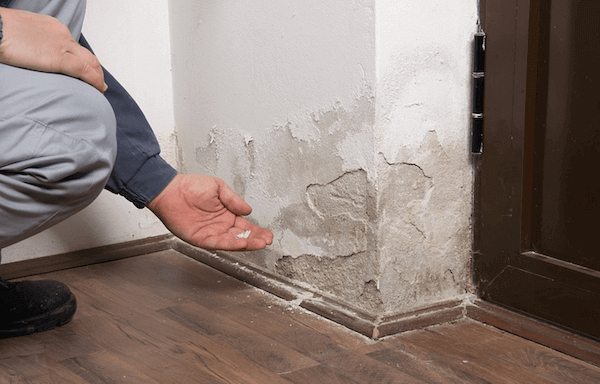Do's & Don'ts of Water Damage.
Do's & Don'ts of Water Damage.
Blog Article
The publisher is making a number of good points about Safety Tips To Prevent Fire And Water Damage overall in this article in the next paragraphs.

Water offers life, but water intrusion on some components where it's not supposed to be can lead to damages and trouble. If the water leaks into your framework, it can peel away the surface area and wear down the product's foundation. Mold and mold additionally prosper in a wet atmosphere, which can be hazardous for your and also your family members's wellness. Additionally, homes with water damages odor musty as well as old.
Water can originate from several resources like hurricanes, floodings, burst pipelines, leakages, and sewage system problems. It's much better to have a working knowledge of safety and security precautions if you have water damages. Below are a few guidelines on how to manage water damages.
Do Prioritize House Insurance Coverage Protection
Seasonal water damage can come from floods, seasonal rains, and also wind. There is also an occurrence of an unexpected flood, whether it originated from a faulty pipeline that suddenly bursts into your residence. To safeguard your residence, get home insurance coverage that covers both acts of God such as all-natural disasters, and emergencies like damaged plumbing.
Do Not Fail To Remember to Shut Off Energies
When calamity strikes as well as you're in a flood-prone location, turn off the main electrical circuit. Turning off the power avoids
When water comes in as water offers as a conductor, electrical shocks. Don't neglect to shut off the main water line valve as a method to avoid more damage.
If the floodwaters are getting high, keep your furniture steady as they can move and trigger extra damage.
Do Remain Proactive and also Heed Weather Condition Alerts
Tornado floodings can be extremely unpredictable. If you reside in a location pestered by floodings, remain prepared and positive in any way times. Pay attention to the news as well as emptying cautions if you live near a body of water like a river, lake, or creek . Get your valuables and also essential records from the ground floor as well as cellar, then placed them in a refuge and also the highest feasible level.
Do Not Overlook the Roof
Your roofer ought to take care of the damaged gutters or any kind of various other signs of damage or weakening. An examination will prevent water from flowing down your walls and saturating your ceiling.
Do Take Notice Of Tiny Leakages
There are red flags that can draw your interest and also show to you some damaged pipes in your house. Indicators of red flags in your pipelines consist of bubbling paint, peeling off wallpaper, water touches, water stains, or dripping audios behind the wall surfaces. Repair and also check your plumbing fixed before it results in substantial damage to your residence, finances, and also a personal problem.
Don't Panic in Case of a Burst Pipe
Timing is essential when it comes to water damages. If a pipe bursts in your residence, right away shut off your major water shutoff to reduce off the source as well as prevent more damages. Call a reliable water damage remediation professional for help.
Water offers life, but water intrusion on some components where it's not expected to be can result in damages as well as hassle. In addition, homes with water damages scent old and mildewy.
Seasonal water damage can come from floods, seasonal rains, and also wind. Signs of red flags in your pipes include bubbling paint, peeling wallpaper, water touches, water stains, or trickling sounds behind the wall surfaces. If a pipeline bursts in your house, promptly shut off your major water shutoff to reduce off the source and also avoid even more damages.
Some Do's & Don't When Dealing with a Water Damage
DO:
Make sure the water source has been eliminated. Contact a plumber if needed. Turn off circuit breakers supplying electricity to wet areas and unplug any electronics that are on wet carpet or surfaces Remove small furniture items Remove as much excess water as possible by mopping or blotting; Use WHITE towels to blot wet carpeting Wipe water from wooden furniture after removing anything on it Remove and prop up wet upholstery cushions for even drying (check for any bleeding) Pin up curtains or furniture skirts if needed Place aluminum foil, saucers or wood blocks between furniture legs and wet carpet Turn on air conditioning for maximum drying in winter and open windows in the summer Open any drawers and cabinets affected for complete drying but do not force them open Remove any valuable art objects or paintings to a safe, dry place Open any suitcases or luggage that may have been affected to dry, preferably in sunlight Hang any fur or leather goods to dry at room temperature Punch small holes in sagging ceilings to relieve trapped water (don't forget to place pans beneath!); however, if the ceiling is sagging extremely low, stay out of the room and we'll take care of it DO NOT:
Leave wet fabrics in place; dry them as soon as possible Leave books, magazines or any other colored items on wet carpets or floor Use your household vacuum to remove water Use TV's or other electronics/appliances while standing on wet carpets or floors; especially not on wet concrete floors Turn on ceiling fixtures if the ceiling is wet Turn your heat up, unless instructed otherwise

We had been shown that editorial about What You Can Do At Home To Prevent Fire And Water Damage from an associate on a different web page. If you enjoyed reading our post please make sure you remember to pass it around. We cherish reading our article about Fire And Water Damage Prevention.
Report this page